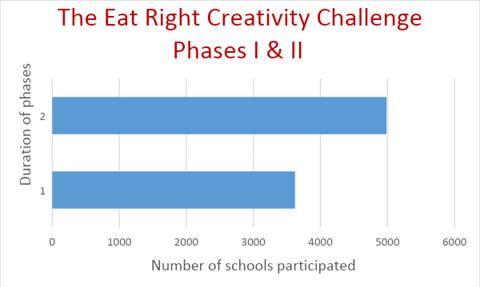No Results Found
The page you requested could not be found. Try refining your search, or use the navigation above to locate the post.

The Kerala State Consumer Dispute Redressal Commission is currently addressing a significant case that has garnered attention due to the far-reaching implications of the central law known as the Clinical Establishments (Registration and Regulation) Act, 2010. In this case, Manoj Chacko’s employment prospects in Saudi Arabia were negatively impacted when Gulshan Medicare, a clinic operating under the regulations of the aforementioned law, issued an incorrect “X-RAY UNFIT” certificate to him. The Kerala State Consumer Dispute Redressal Commission upheld the judgment of the District Commission, which found Gulshan Medicare to be deficient in services and involved in unfair business practices.
Dr Prem Lata, Legal Head VOICE
The Clinical Establishments (Registration and Regulation) Act, 2010
“Clinical establishment” means— (i) a hospital, maternity home, nursing home, dispensary, clinic, sanatorium or an institution by whatever name called that offers services, facilities requiring diagnosis, treatment or care for illness, injury, deformity, abnormality or pregnancy in any recognised system of medicine established and administered or maintained by any person or body of persons, whether incorporated or not; or
(ii) a place established as an independent entity or part of an establishment referred to in sub-clause
(iii), in connection with the diagnosis or treatment of diseases where pathological, bacteriological, genetic, radiological, chemical, biological investigations or other diagnostic or investigative services with the aid of laboratory or other medical equipment, are usually carried on, established and administered or maintained by any person or body of persons, whether incorporated or not.
On August 21, 2013, the complainant, who worked in Saudi Arabia, returned on a 15-day leave. A minor delay in his return led to the issuance of a second visa, and he was now required to get a medical certificate following a check-up. In accordance with Gulf Cooperation Council regulations, he got in touch with Gulshan Medicare, a medical facility permitted to do the required medical examinations for people applying for jobs in GCC nations.
A check-up was conducted on November 21, 2013, for a fee of Rs. 4200, and an x-ray revealed right upper zone fibrosis, which prevents entry into Gulf countries. A licenced radiologist who was stationed in Bombay and was unavailable to sign the report nevertheless issued the chest x-ray report. The complainant sought a second opinion from Dr. P. Sukumaran, a pulmonologist at Bharat Hospital Kottayam, after determining that the report was inappropriate. He attested that there is no clinical or radiological indication of an active respiratory ailment in the complainant. The complainant asked to examine the report, and his employer also asked to revisit the situation, but both requests were turned down. Complainant filed consumer complaint before District Commission Ernakulum alleging clinic issued unfit certificate with ulterior motive to help getting visa to someone else.
On November 13, 2016, the District Consumer Commission issued an order declaring the clinic to be lacking in services and imposed a compensation of Rs one lac on the complainant. Subsequently, the matter was challenged at the State Commission level. The State Commission diligently reviewed all the documents submitted by both parties to reach a logical conclusion.
Dr. P Sukumaran, a pulmonologist, determined that the complainant showed no clinical or radiological evidence of any active respiratory disease. Furthermore, the pertinent provisions of the Act concerning the clinic’s duties and responsibilities were also examined.
Art 16(6) guaranteed that medical fitness certificate given to the expatriates should be authenticated and validated. Article 16(11) said that all issued certificates will be stamped with the seal of the centre after a medical examination has been carried out. Evidently report was neither stamped with seal nor signed by the doctor, hence its authentication or validation was under question.
Additionally, the obligation specified in section 4.3, which necessitates the presence of a qualified radiologist or a related medical practitioner for the interpretation of the report, was not fulfilled. It was discovered that the doctor responsible for examining the report was not present in Ernakulam but instead was stationed in Mumbai. There was no substantiation to establish the presence of a qualified doctor or radiologist at the testing centre. Given that an erroneous report could potentially result in the loss of job opportunities for the candidate, it was imperative to thoroughly review the report, particularly when it indicated unfitness.
State commission confirmed the order made by District Commission holding the clinic deficient in services.
It is noteworthy to mention that a matter concerning the qualifications of radiologists and doctors who sign reports under the Clinical Establishment Act 2010, was brought before the High Court of Delhi. The High Court of Delhi has issued a notice to the Health Ministry in response to a writ petition filed against the amendments made in the Rules 2020 of the Clinical Establishment Act. The bench of the Delhi High Court, comprising Prateek Jalan and Chief Justice DN Patel, issued the notice on December 17, 2020.
Dr. Rohit Jain submitted a writ petition to the High Court of Delhi, requesting a directive to declare the Clinical Establishment (Central Government) Amendment Rules, 2020, of the Clinical Establishment Act, 2010 as ultra vires. These revised rules permit individuals holding a Master’s of Science or Ph.D. degree and working as technicians in diagnostic laboratories to sign and authenticate medical reports without the counter signature of a qualified MBBS or MD in Pathology. Since every test report is considered a medical report that necessitates the application of expertise, interpretation, and diagnosis from the outset, it is imperative that only individuals with qualifications of MBBS or MD should be authorized to sign such reports.
Arguments by the petitioner were-
Following the notice from the High Court of Delhi, the Ministry of Health and Family Welfare issued a notification in New Delhi on April 9, 2021, marked as S.O. 1992(E). This notification stated that, in accordance with the authority granted by subsection (1) of section 3 of the Clinical Establishments (Registration and Regulation Act, 2010 (23 of 2010), and in replacement of the previous notification dated June 18, 2020, the Central Government has established a National Council for Clinical Establishments, which will be chaired by a designated chairperson.
Related
The page you requested could not be found. Try refining your search, or use the navigation above to locate the post.

India’s renewable energy sector has witnessed tremendous growth, and among the various sources, wind energy emerges as a highly effective solution to address concerns related to depleting fossil fuels, coal imports, greenhouse gas emissions, and environmental pollution. When choosing a turbine, it is essential to consider several factors to ensure it aligns with your requirements. These factors include the appropriate size, suitability for the available wind resource, reliability, warranty, availability of spare parts, and the proximity of operation and maintenance providers. By carefully considering these aspects, you can select a turbine that best suits your needs.
A wind turbine is a device that converts kinetic energy of wind into electrical energy. They’re much more compact though — small enough to install either on your roof or in your garden – and some have curved blades, not unlike a whisk. Small wind turbines still function like their bigger counterparts — you’ll get clean electricity generated entirely by the power of wind. As a renewable and non-polluting source, wind energy offers a sustainable and affordable alternative, reducing the dependence on traditional fuel sources and transportation. By harnessing wind power, India can significantly contribute to the generation of green and clean electricity.
There are two main types of home wind turbines
These turbines can either be placed on a rooftop or as a standalone tower. When choosing a standalone tower, the placement and build are important.

Roof-mounted wind turbines are installed on top of your roof. It’s typically cheaper to install a roof-mounted turbine than a standalone one, although their size means they are less powerful. You can normally generate around 1–2 kilowatts (kW) of electricity.

Standalone wind turbines are more powerful than roof-mounted turbines, because they’re bigger and can take better advantage of the wind. It still depends where you place them though — a standing turbine flanked by trees or taller buildings isn’t going to be optimal. They work most efficiently in open spaces, which means standalone wind turbines are best suited for rural properties with a lot of land. That makes them less ideal for urban environments. Standalone wind turbines typically generate between 3–15 kW per day, and some of the largest models can generate more than 25 kW.
Installing a roof-mounted turbine can be done in few hours by a professional. Standalone wind turbines can take longer. It’s always best to get a trusted professional to install your wind turbine, especially with standalone systems.
Wind turbines use wind to make electricity. Wind turns the propeller-like blades of a turbine around a rotor. The turbines are connected to shafts. When the turbines turn, the shaft turns. The shaft then turns a generator. The turning of the generator creates a flow of electrons, which creates electricity that an external battery bank stores. .
You must place wind turbines in an area that receives a minimum amount of wind according to the supplier. For an average home wind turbine, that’s usually a wind speed of 5.5 mph or more. Without this minimum amount of wind, the blades just won’t spin, and no electricity will be produced. However, the rated energy output of a turbine can’t be achieved unless the turbine has access to its rated wind speed, which is the average amount of wind needed to get the generator producing at max capacity. For example, a 500W turbine rated for 27 mph wind speeds will only generate around 100W of power when the wind is 10-12 mph.
Compared to the traditional three blade wind turbine, a five-blade turbine can increase annual performance. The speed of the blades of a five-blade turbine is 60% of the three-blade wind turbine. Five-blade wind turbines reduce the chance of high-speed malfunction.
Capacity
Small wind turbines used in residential applications generally range in size from 400 watts to 20 kilowatts, depending on the amount of electricity you want to generate. A 1.5-kilowatt wind turbine will meet the needs of a home requiring 300 kilowatt-hours per month in a location with a 6.26 meters-per-second annual average wind speed.
Grid-Connected Small Wind Electric Systems
Small wind energy systems can be connected to the electricity distribution system. These are called grid-connected systems. A grid-connected wind turbine can reduce your consumption of utility-supplied electricity for lighting, appliances, electric heating and cooling, and vehicle charging. If the turbine cannot deliver the amount of energy you need, the utility makes up the difference. When the wind system produces more electricity than your household requires, the excess is credited and used to offset future use of utility-supplied power.
Wind Power in Isolated Grid Systems
Wind power can be used in isolated off-grid systems, or microgrid systems, not connected to an electric distribution grid. In these applications, small wind electric systems can be used in combination with other components — including a small solar electric system — to create hybrid power systems. Hybrid power systems can provide reliable off-grid power for homes, farms, or even entire communities that are far from the nearest utility lines.
Wind Resource Considerations — You can have varied wind resources within the same property. In addition to measuring or finding out about the annual wind speeds, you need to know about the prevailing directions of the wind at your site. In addition to geological formations, you need to consider existing obstacles, such as trees, houses, and sheds. You also need to plan for future obstructions, such as new buildings or trees that have not reached their full height. Your turbine needs to be sited upwind of any buildings and trees.
System Considerations — It is encouraged that you only consider small wind turbines that have been tested and certified to national performance and safety standards. You will need to take the length of the wire run between the turbine and the load (house, batteries, water pumps, etc.) into consideration. Using larger wire will also increase your installation cost. Your wire run losses are greater when you have direct current (DC) instead of alternating current (AC). If you have a long wire run, it is advisable to invert DC to AC.
Wind is a more efficient power source than solar. Compared to solar panels, wind turbines release less CO2 to the atmosphere, consume less energy, and produce more energy overall.
Wind turbines achieve optimal performance in open areas where there are no barriers or obstructions that disrupt wind patterns. Consequently, turbines installed in urban areas are generally less efficient. To maximize energy production, it is crucial to have a consistent wind flow in terms of both speed and direction.
Installing a rooftop small wind turbine makes sense if you can get the equipment high enough and out of the way of obstacles. Of course, living in a windy area also helps. Otherwise, the installation and maintenance costs might outweigh the savings due to a lack of sustained winds. Several field trials have found that building-mounted turbines perform poorly, producing only a small fraction of the energy they would produce if properly sited. Standalone wind turbines are more powerful than roof-mounted turbines.
The pricing for small wind turbines typically begins at Rs 70,000 per kW. These costs vary based on factors such as the materials used, the technology employed, the location, and whether the turbine is grid-connected.
Turbine blades for small wind turbines are typically 1.5 to 3.5 metres (4 ft 11 in – 11 ft 6 in) in diameter and produce 0.5-10 kW at their optimal wind speed.
Wind turbines are designed for a service life of 20-25 years. During this period, it is possible to replace the blades of the main mechanisms. In any case, this issue should be specified when ordering a wind turbine.
The turbine you decide to purchase must fit your needs for size, wind resource, availability, reliability, warranty, spare parts availability, and proximity of operation and maintenance teams.
Modern wind turbines generate minimal noise. While the turbine blades may produce a whooshing sound when encountering air turbulence, this noise is typically overshadowed by the natural background noise of the blowing wind.
|
S.No. |
Brand |
Capacity in watt |
Specifications |
Price, Rs. |
|
1 |
Layfuz
|
1200
|
Colour: White |
35000 |
|
2 |
Zhangxi |
1200 |
Voltage: 12 Volts Special Feature: Portable Colour: White Total Power Outlets:1 Frequency: 50 Hz Aluminium alloy body and nylon fibre bs, with high temperature spray casting, ultraviolet-proof, acid rain proof, durable to use, can stand bad weather conditions and fit for outdoor use. |
50350 |
|
3 |
Layfoxz |
1200 |
Aluminium Alloy Shell Nylon Fibre B B: 5 B s Shape: Lantern Rated Voltage: 12V Maximum Start-up Wind Speed: 2m/s Rated Wind Speed: 12m/s Working Temperature: -40℃~80℃ Item Size: 60 * 90cm / 23.6 * 35.4in (H * Dia.) Package Size: 61 * 44 * 30cm |
48359 |
|
4 |
Layfoxz |
1200 |
Colour: White Material: Aluminium Alloy Shell Nylon Fibre B B : S-Type, 5 B s Rated Voltage: 12V Maximum Power: 1200W (Under ideal environment which includes wind speed, temperature, surrounding building and more) Start-up Wind Speed: 2m/s Rated Wind Speed: 12m/s Working Temperature: -40℃~80℃ Item Size: 66 * 120cm / 26.0 * 47.2in |
34919 |
|
5 |
Zhangxi |
1200 |
Colour: White Wattage: 1200 Watts Voltage:12 Volts Special Feature: Portable Frequency: 50 Hz Aluminium alloy body and nylon fibre b s, with high temperature spray casting, ultraviolet-proof |
50939 |
|
6 |
AIXING |
1200 |
Lantern Wind Turbine Generator Voltage:12 Volts Special Feature: Portable Total Power Outlets:1 Frequency: 50 Hz Aluminium alloy body and nylon fibre bs, with high temperature spray casting, ultraviolet-proof, acid rain proof, |
60804 |
|
7 |
AIXING |
1200 |
Wattage:1200 Watts Special Feature: Portable Total Power Outlets: 1 Frequency: 50 Hz
|
43564 |
|
8 |
Socialme |
400 |
Model: NE-400R |
45599 |
|
9 |
Layfuz
|
400 |
Colour: White |
34064 |
Source: amazon.in
Note: for latest prices check at amazon.in or get quotation from https://www.indiamart.com.We will be publishing updated report on this product in next year.
Reference: https://www.energy.gov
Related
The page you requested could not be found. Try refining your search, or use the navigation above to locate the post.

If you find yourself dissatisfied with the services provided by your current mobile phone service provider and wish to switch to a different company, you can easily port your mobile number. Similarly, you also have the option to port your health insurance policy, allowing you to transfer your policy from one insurance provider to another.
Subas Tiwari
When you change your health insurance policy from one insurance company to another, you don’t have to lose the benefits you have accumulated.
In the past in health insurance policies, such a move resulted in your losing benefits like the waiting period for covering “Pre-existing Diseases”.
Now IRDA protects you by giving you the right to port your policy to any other insurer of your choice. It has laid down that your new insurer “shall allow for credit gained by the insured for pre-existing condition(s) in terms of waiting period”.
This applies not only when you move from one insurer to another but also from one plan to another with the same insurer.
Rights
Conditions
IRDA has created a web-based facility to get and maintain data about all health insurance policies issued by insurance companies to individuals so that it can be accessed by the new company to which a policyholder wishes to port his policy.
This enables the new insurer to obtain data on history of health insurance of the policyholder wishing to port his policy.
If you think that health insurance portability is an excellent choice for yourself and now you are wondering how to port your health insurance policy, here are the details of how to complete the process:
Stage 1
First of all, you may have to fill the IRDA portability form to initiate the process. Note that a policyholder can initiate a portability request when the policy is due for renewal. You will have to approach the insurance company where you wish to port your existing health insurance policy. The new insurer will send you a couple of documents that include a portability form and a proposal form. They may also send details about various health insurance products that the company offers.
Stage 2
Once you fill all the necessary forms and submit it to your new insurance company, they will get in touch with your previous insurer for obtaining your medical records and other related information. They might also ask for your claim history. Your old insurance company is bound to share this information via IRDA i.e. the insurance regulator when they receive such requests.
Stage 3
When the new insurance company receives all the required details, they will decide whether or not they wish to provide you a health insurance policy. This is called underwriting of a policy. An underwriter will analyse the data related to you and consider your risk profile to decide about providing health insurance to you. Your new insurance company is supposed to underwrite your policy within 15 days if they decide to insure you. In case of a delay in this time period, it is considered that you are insured under the new insurance company.
The process of porting a health insurance policy can differ slightly based on the terms and conditions of the insurance company. You need to get in touch with your current and previous insurer to understand the exact set of documents required for the purpose of porting the policy. You may be asked to submit the following documents to initiate the process:
Switching to a new health insurance company has its own set of advantages and disadvantages. We will discuss both in this section. You can read through them and then decide whether you want to make a switch to a new insurer or renew the existing health insurance policy at your current insurance company.
Benefits of porting to a new health insurance company are as follows:
Disadvantages of porting to a new health insurance company are as follows:
There could be a few reasons why one’s health insurance portability gets rejected. Let’s take a look at these reasons and understand what a policyholder can do in such cases.
A medical emergency can affect a person in both financial and emotional ways. It can easily deplete your savings if you do not have proper health insurance coverage. Buying a policy without considering your needs, lifestyle, and coverage can have a huge impact on the claim amount. Thus, it is important to consider the following things while porting your health insurance policy from one insurer to another.
Here are some answers to the most asked questions related to Health Insurance Portability.
From the article, I understood that making a switch between two insurance companies is possible. However, is it possible to switch between plans in the same insurance company?
Yes, it is possible to switch to a new health insurance policy offered by the existing insurance company. This process will not take as much time as switching to a new insurance company, because your current insurer already has all the details required to make a switch.
I have already served half of the waiting period. Will it reset upon porting the policy to a new health insurance company?
Probably not. If the applicable waiting period for a specific condition is similar to that of the old policy, then you may only have to serve the remaining waiting period under the new plan. However, this solely depends upon the terms and conditions of the new health insurance company.
Why should I port my health insurance policy?
You should port your health insurance policy if you are not happy with the services provided, coverage, or premium with respect to the current insurance company and your health insurance policy.
Does the age of a policyholder matter while porting health insurance?
Yes, the age of a policyholder is a vital factor while porting the policy. The older the person the more will be the health insurance premium. An insurance company may also reject a proposal based on the risk factor associated with the age of a policyholder.
Is it a good idea to buy health insurance coverage from two different insurance companies?
Buying health insurance from two different insurers depends upon the coverage being purchased. There is no point in buying similar coverage from multiple insurers. Instead, consider buying different coverages to create a comprehensive health insurance portfolio. This can provide all-round coverage in the time of a medical emergency.
Info sourced from: https://policyholder.gov.in & https://www.acko.com
Related
In India, owning a vehicle, whether it's a car or a two-wheeler, is a common aspiration. However, not everyone has the immediate financial means to...
Family floater health insurance policies are a type of health insurance plan that provides coverage for the entire family under a single policy....
Over the past few years, there has been a growing awareness among individuals regarding health insurance. Furthermore, following the Covid-19...

Soup has always been a comfort food, warming our souls and soothing our taste buds. In our fast-paced lives, packaged soups have become a convenient go-to option. Nonetheless, are they as healthy as they claim to be? Let’s dive into the world of packaged soups, unravel their healthfulness, and discover tips to make smarter choices.
Richa Pande
In today’s fast-paced world, packaged soups have emerged as a convenient and time-saving choice for numerous individuals looking for a quick meal. However, it is crucial to take into account the nutritional value of these convenient options and make well-informed decisions that promote our overall well-being. While not all packaged soups are created equal in terms of healthiness, this article aims to explore the realm of packaged soups, shed light on their nutritional aspects, and offer practical guidance for selecting the most suitable options that align with our dietary requirements and personal preferences.
Before we dive into the specifics of packaged soups, it’s important to understand the overall nutritional landscape of these products. While they offer convenience and a wide range of flavours, it’s crucial to be mindful of their ingredients and nutrient composition. Packaged soups can vary significantly in terms of their nutritional profiles, with some being more wholesome than others.
One key factor to consider is the sodium content. Many packaged soups tend to be high in sodium, which can have adverse effects on our health when consumed in excess. Excessive sodium intake has been linked to increased blood pressure and an increased risk of heart disease. Therefore, it’s advisable to choose soups with lower sodium levels or opt for reduced-sodium varieties.
Another important consideration is the presence of added sugars. While soups may not immediately come to mind as a source of added sugars, some packaged options can contain significant amounts. Added sugars not only contribute to excess calorie intake but can also lead to weight gain, increased risk of chronic diseases, and dental issues. Checking the ingredient list for terms like sucrose, corn syrup, or fructose can help you identify soups with lower added sugar content.
Additionally, it’s essential to be mindful of added additives and preservatives commonly found in packaged soups. Ingredients like corn flour, maltodextrin, and food colours are often used to enhance flavour, texture, and appearance. While these additives are generally considered safe for consumption, some individuals may prefer to avoid them due to personal preferences or specific dietary restrictions. Choosing soups with minimal artificial additives can help you make healthier choices.
When it comes to selecting packaged soups that promote your well-being, there are a few key factors to keep in mind. By following these tips, you can make informed choices and enjoy the convenience of packaged soups without compromising your health goals.
Consider making your own soups at home using fresh ingredients to ensure maximum nutrition and flavour. This way, you can control the sodium and sugar content, avoid preservatives and additives, and customize the soup to your taste preferences. With some planning and creativity, you can whip up a batch of soup that’s both delicious and nourishing. It’s a good idea to make extra and freeze individual portions for later. This way, you’ll always have a nutritious and convenient meal option on hand. Additionally, resist the temptation to sieve your homemade soups as it removes valuable fibre and nutrients.
Invest in quality storage containers to keep your soups fresh and organized. Don’t forget to label them with the date to ensure you use them within a reasonable time frame. Stocking your freezer with homemade soups is a smart strategy for busy days or when you’re craving a comforting and healthy meal. Choose food-grade plastic containers for storing your homemade soups, ensuring they are BPA-free and specifically designed for food storage. Avoid using glass containers in the freezer as they can crack due to temperature changes.
By being mindful of the healthfulness of packaged soups and making informed choices, we can enjoy the convenience without compromising our well-being. Remember, it’s all about striking a balance and being conscious of the ingredients and nutritional value. So, the next time you reach for a packaged soup, arm yourself with the knowledge shared in this article and savour a delicious and nourishing meal!
Related
In 2019, a national survey by the Food Safety and Standards Authority of India (FSSAI) detected Aflatoxin M1 (AFM1) in milk samples. It was found...
You might have heard about A2 milk and the claims that it is better than the regular milk (A1 milk) commonly available in the market. Consumer...
There are these advertisements that feature individuals gulping down food in excessive amounts, leading to indigestion (also known as heartburn and...
Food additives such as colourings, preservatives, chemicals in food packaging, and so on can have a negative impact on children and cause issues such as hyperactivity and disruptive behaviour. This is due to children’s lower body weight than adults, which serves as a reference point in determining the permissible limits of food additives. In order to restrict your child’s exposure to certain food additives, we have developed a list of these additives, foods that typically contain them, and how to recognise them.
Richa Pande
Food additives are used to keep food fresh, prevent spoilage, and improve its flavour, texture, and appearance. However, some evidence suggests that these additives may have a negative impact on health, particularly in children and the elderly. Similarly, chemicals found in some food packaging could be hazardous to their health. Thus, it is important to educate ourselves about these additives and chemicals and take measures to reduce our exposure to them.
Food colours are used to enhance the appearance of food products. However, there have been numerous concerns raised in recent years about potential health consequences. According to certain research, food colours such as Blue 1, Red 40, Yellow 5 and Yellow 6 can induce allergic reactions in some people. Many food colours have been related to hyperactivity in children, however another study suggests that this may be due to some children being more sensitive than others. It has also been proven that if children diagnosed with ADHD cut synthetic food colours from their diet, they show decreased ADHD symptoms.
Some food preservatives are also linked with causing hyperactivity in children. A recent study indicates Sodium Benzoate, a preservative commonly used to preserve fruit pulp and purees, jams, pickles, margarine, olives, fruit yogurts, canned vegetables, and salads, etc. can also cause hyperactivity in children.
Always go through the ingredient list in the food labels, and avoid picking the products for your children that have these food additives
They are commonly used in cured and processed meats as a food preservative and to enhance the meat colour. It has been found that they can interfere with thyroid hormone production and the blood’s ability to deliver oxygen in the body. They have also been linked with gastrointestinal and nervous system cancers.
It is an artificial sweetener present in several sugar-free beverages and some vitamin supplements. It has been found to have negative consequences on the child’s neurological development and to cause increased frequency of mood disorders and frequent headaches.
They are commonly present in butter/oil blends, edible oils (may not be listed on packaging), milk powder, chewing gums, etc. and they can cause symptoms like dermatitis, fatigue, aggressive behaviour, insomnia, and headaches in children.
It is crucial to note that these food colours are mostly present in ultra-processed foods, and their consumption in a balanced diet should be limited regardless. Always choose whole foods because they include more key nutrients and are naturally free of food colouring.
Avoid microwaving food or beverages in plastic containers. Avoid preparing infant formulas, and storing pumped human milk, in plastic containers whenever possible. Use glass or stainless steel cookware. Avoid plastics with recycling codes 3, 6, and 7.

The Eat Right Creativity Challenge-Phase 3 was introduced by FSSAI in June 2022 following the success of phases 1 and phase 2 of the challenge. The ‘Eat Right Creativity Challenge’ (ERCC) phase one was conducted from14th Nov’18-17th Jan’19 in which over 75100 students participated through 3621 schools. ERC II was a poster and photography competition from 16th October 2020 to 20th January, 2021. A total of 4987 schools participated in the Challenge.

The competition aims to unleash students’ creative potential and make them aware about the tools that are needed to develop wholesome eating habits amongst children right from early childhood. The competition aims to motivate schools to establish a setting where nutritious food is available to kids in order to engage, excite, and help them develop healthy eating habits.
The “Eat Right India” movement, a centrepiece programme of the FSSAI, strives to protect people’s health and well-being by promoting safe food, balanced diets, and sustainable lifestyles. The focus of “Eat Right India” is on young people because it is difficult to change food habits once they have been developed early in life. Thus, a school is a clear location where young people can develop healthy eating habits. The FSSAI’s Eat Right school programme uses simple teaching tools to help kids modify their eating habits in a long-lasting way. The ability of young individuals to have an impact on entire families might be used to affect how people eat.
As a part of AzadiKaAmritMahotsav, which marks 75 years of Indian Independence, the Eat Right Creativity Challenge 3 is being introduced. It aims to foster the development of kids’ creative ability, encourage them to adopt healthy eating practises, and tap into their creative talent. The competition aims to inspire schools to provide a safe and healthy food environment as well as to engage, excite, and empower kids to develop wholesome eating and nutrition habits. They will learn about regional, seasonal, and local foods as well as indigenous and traditional cuisine. The competition will take place between 7 June and 31 December 2022.
The third phase of the “Eat Right Creativity Challenge” will involve competitions for school kids in three categories: the Eat Right Poster Competition, the Eat Right Rangoli Competition, and the Eat Healthy Bulletin Board Decoration Competition. Eat Healthy Bulletin Board falls under the team category, while Eat Right Poster and Eat Right Rangoli are under the individual category.
Themes of the competition are: